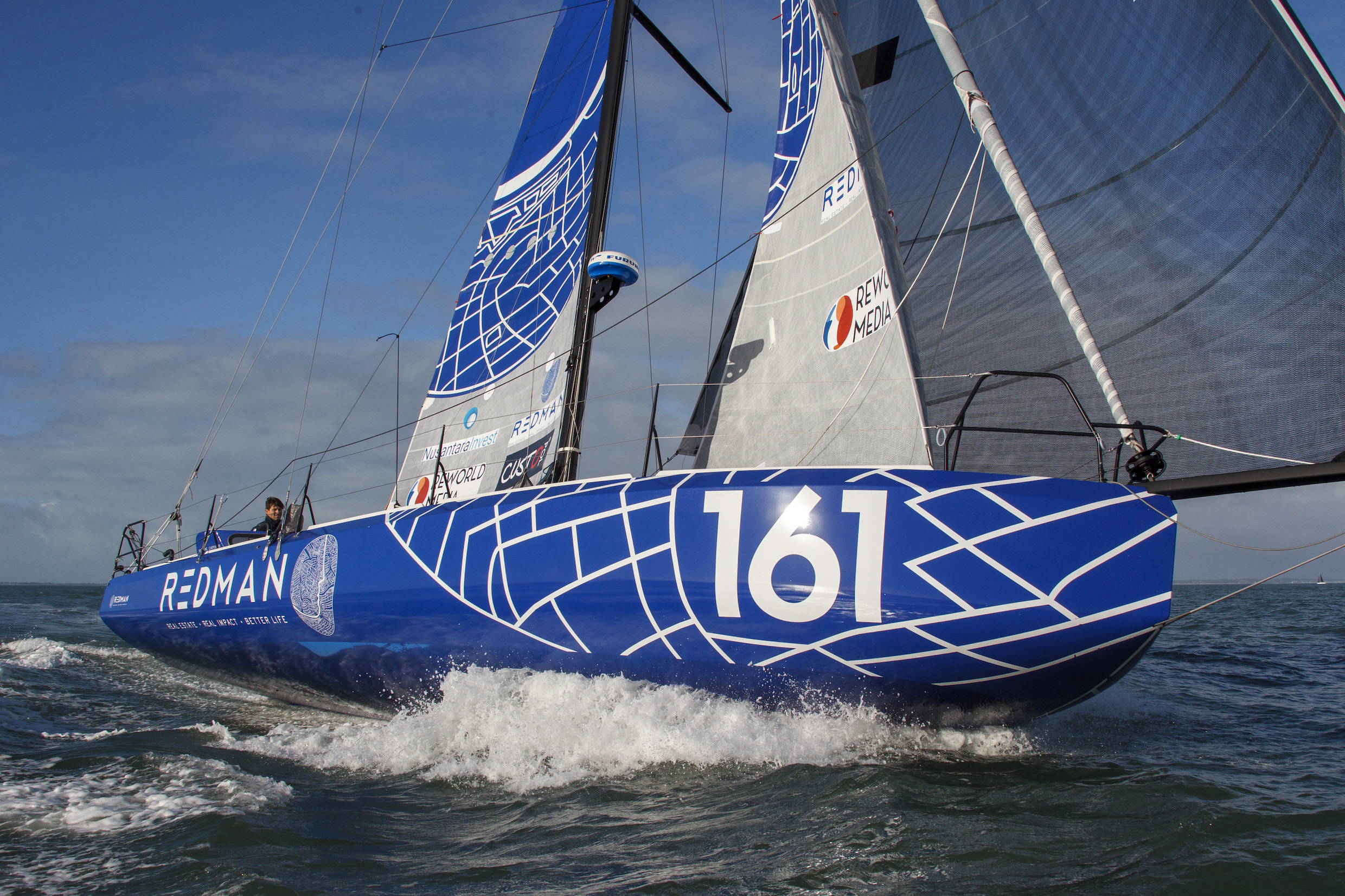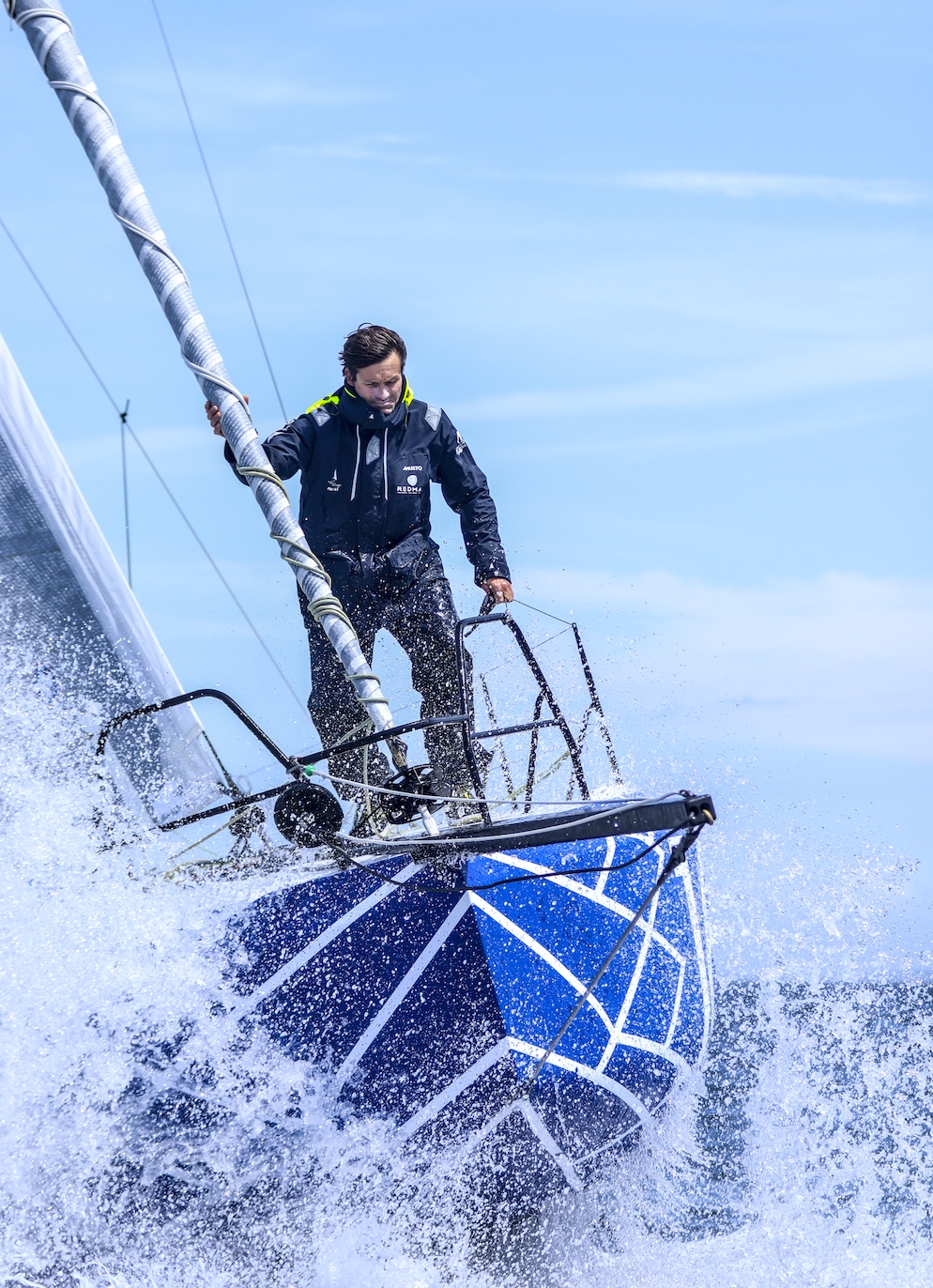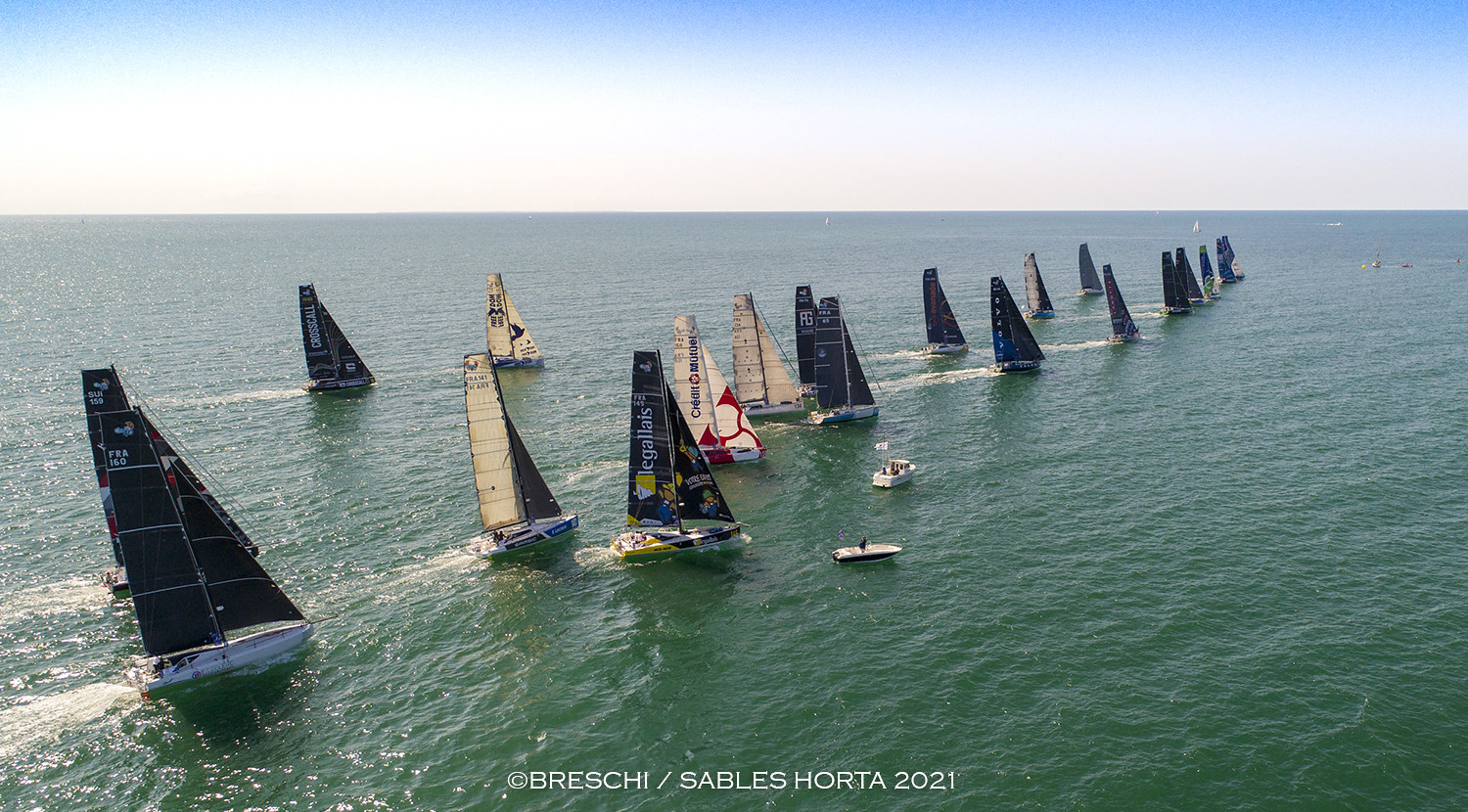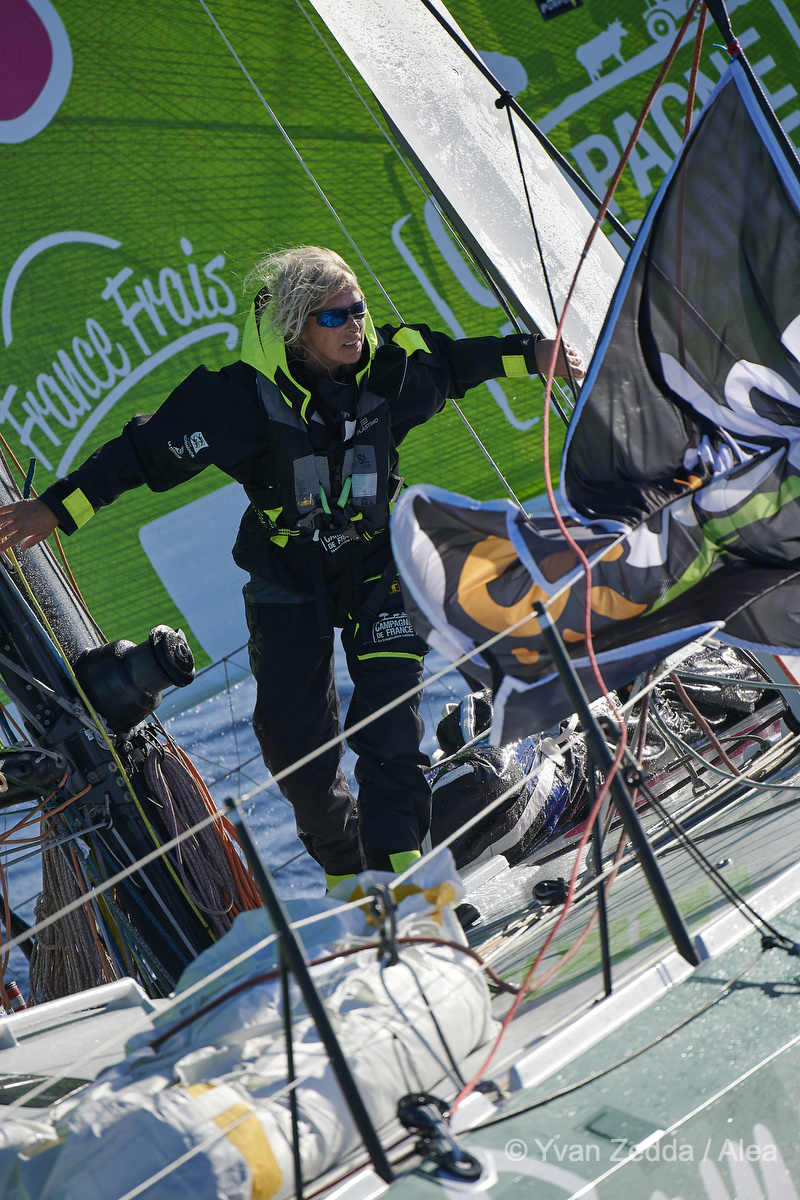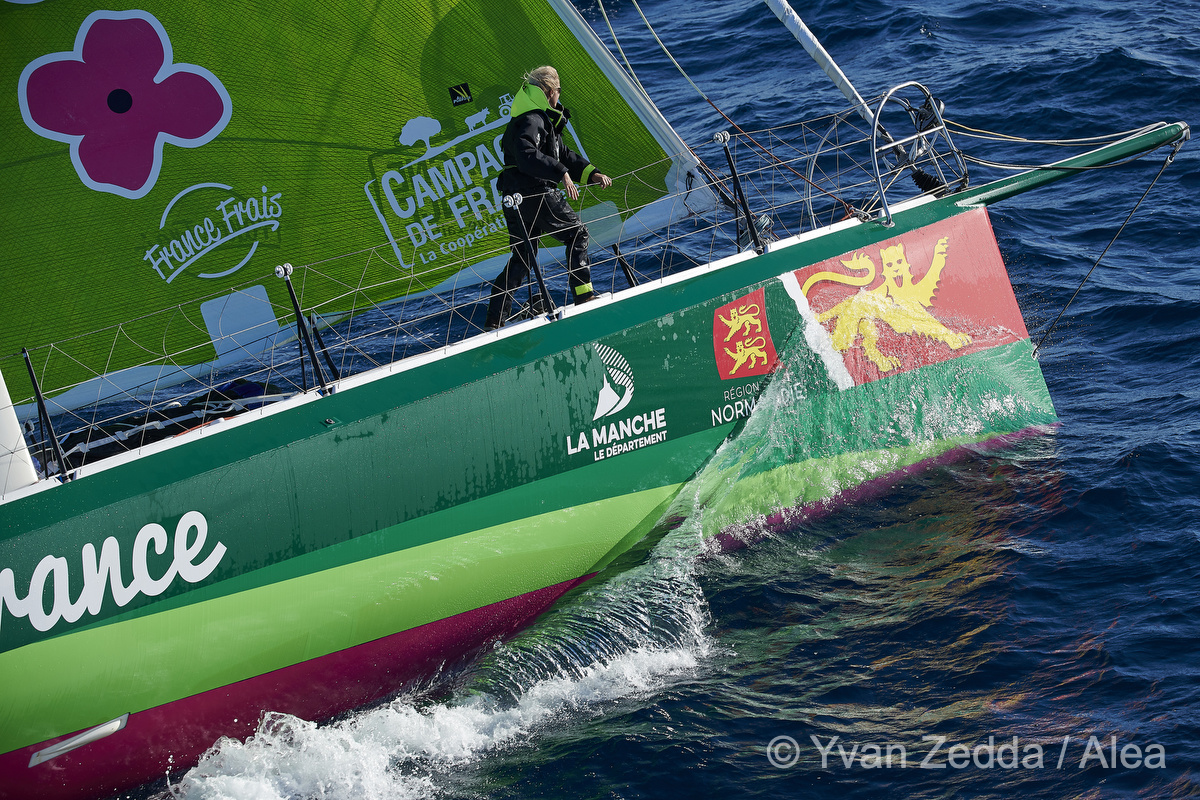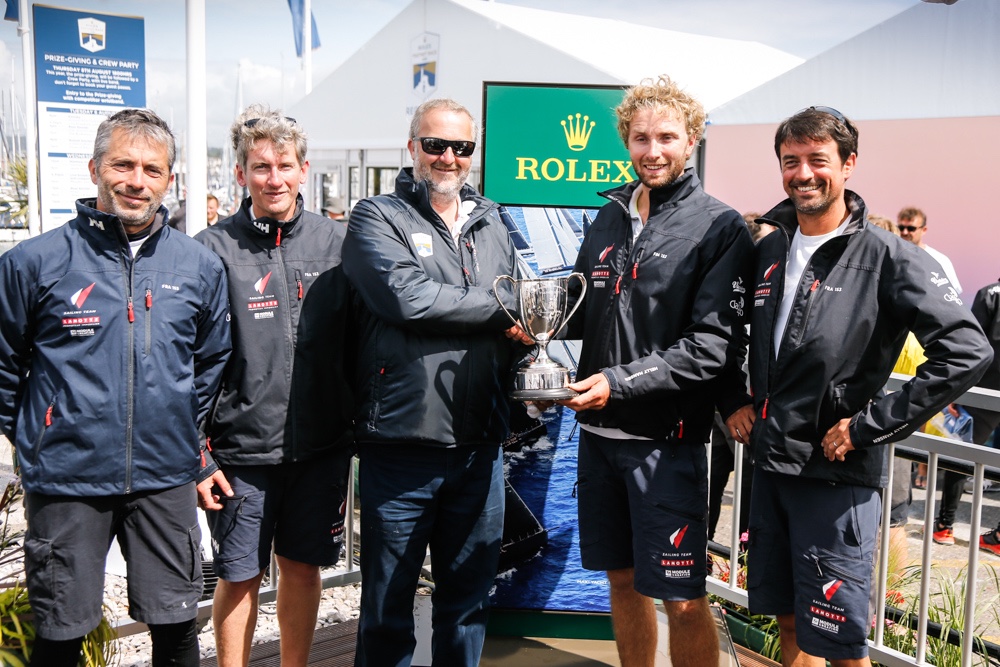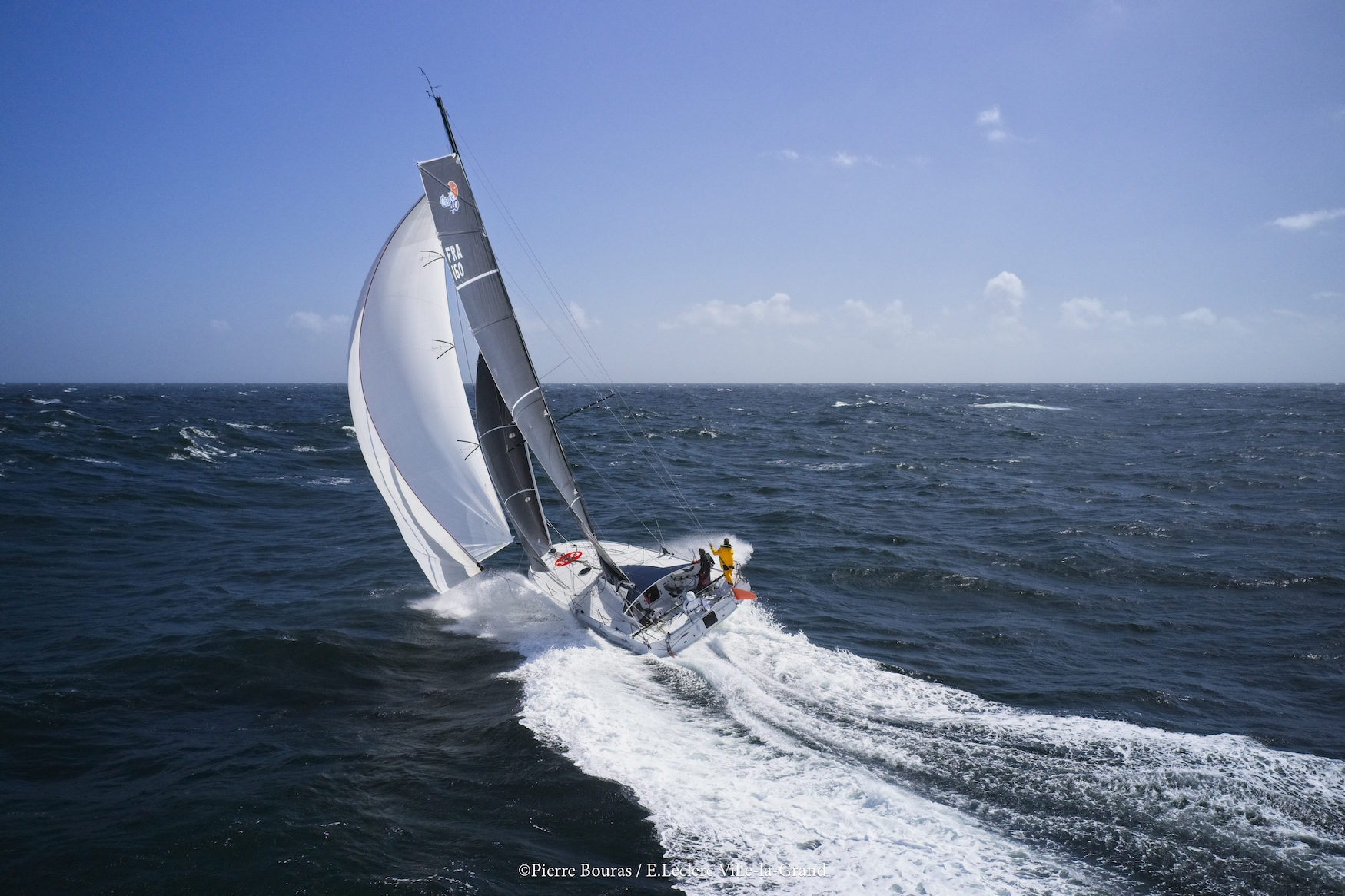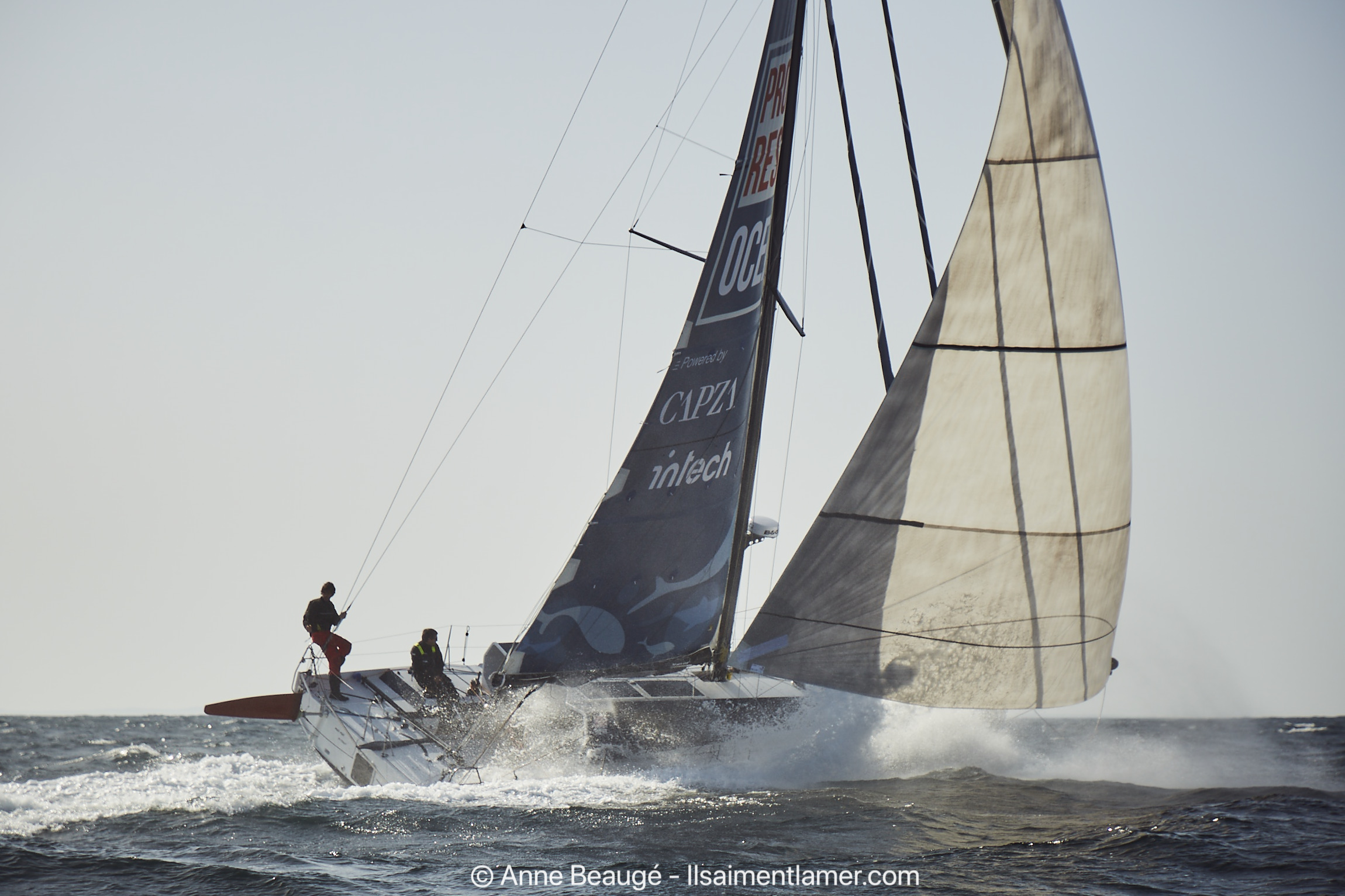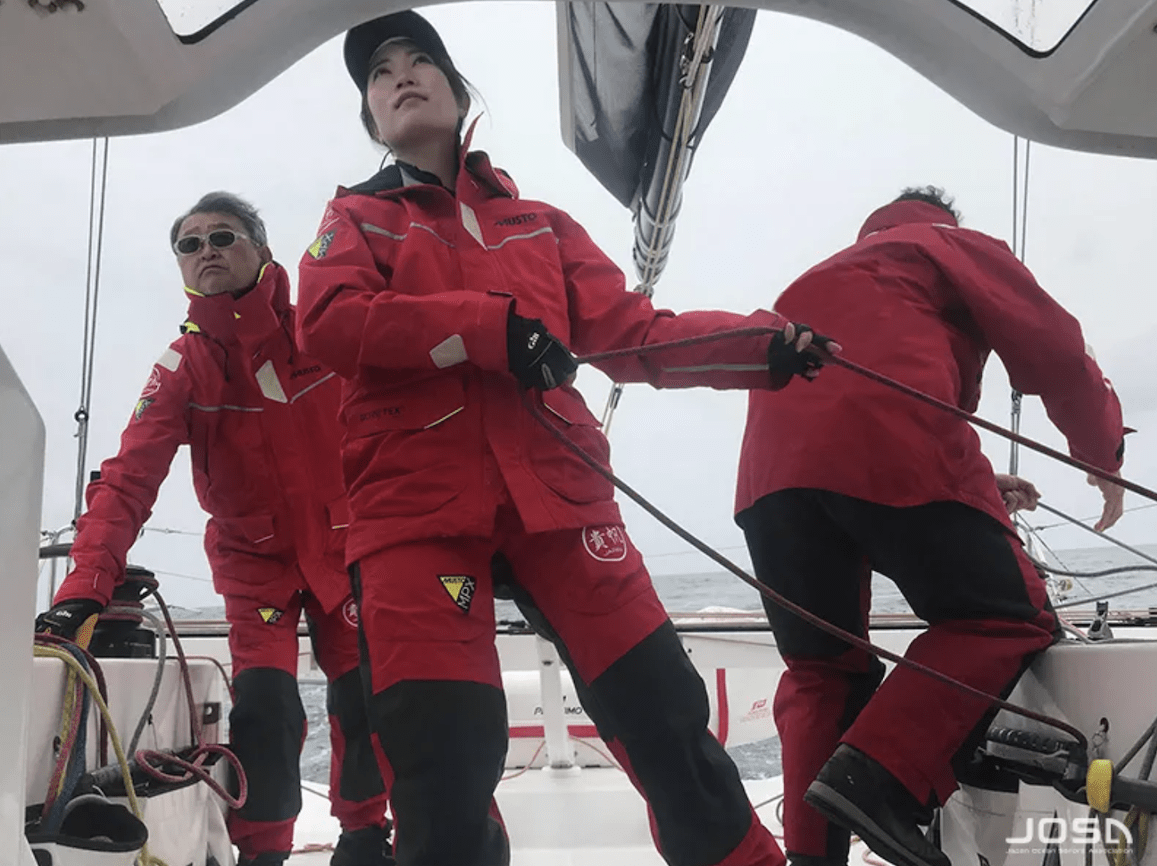Growing class
With the number of entries more than doubling in two years, the Class40 is quickly becoming a favourite at the Rolex Fastnet Race.
28 July 2021
Advertisement
The fleet showing the largest growth within the Rolex Fastnet Race is the Class40. Currently, 39 of these mini IMOCAs have entered – a significant increase from the 19 who competed in 2019.
Now, 17 years on from when the simple Class40 box rule was created by French journalist and sailor Patrice Carpentier, 172 examples have been, or are currently being, built. A jaw-dropping 70 models, including 25 brand new, are now expected on the start line of next year’s Route du Rhum. A level that has seen the entries, for the first time in history, capped.
From the outset, the Class40 rule has aimed to restrict costs by prohibiting carbon fibre, aramids, honeycomb core and pre-preg resin in the hull, deck, interior structure and rudders. Carbon fibre, except restricted modulus, is permitted for the spars. Otherwise, the box rule limits the principal dimensions and minimum displacement to 4580 kilograms.
While this might seem restrictive, creative forces in the French yacht design community have been having their moment.
Advertisement
Despite attempts to resist it, the trend for scow bows, as seen in the IMOCAs and Minis, has reached the Class40. And what they lack in looks, they compensate for in performance. A David Raison-designed Max 40 recently set a new 24-hour record of 428.82 nautical miles.
A similar distance to that which Lawrie Smith’s Whitbread 60 Intrum Justitia covered, setting the outright monohull 24-hour record in 1994. Another Max 40 and the Class40 championship’s present leader, Axel Trehin’s Project Rescue Ocean, is competing in the Rolex Fastnet Race.
In the Rolex Fastnet Race will be five other Class40 ‘scows’; the Marc Lombard-designed Lift v2 Crosscall, plus four examples of the popular, latest Sam Manuard-designed, Mach 40.4.
One of the hottest contenders is likely to be the Mach 40.4 Courrier Redman skippered by Antoine Carpentier, nephew of the Class40’s creator. Already, Redman has finished second in the RORC Transatlantic Race, third in the Normandy Channel Race and the Les Sables-Horta-Les Sables race.
According to Antoine Carpentier’s Mach 40.4’s key difference over the 40.3 is the scow bow and how the mast, keel and engine moved further aft. “It seems to be quite good, except the Lift 40 is faster in light wind,” he says. “When the wind increases a little we are fast downwind and reaching also.”
This will be Carpentier’s seventh Rolex Fastnet Race, and all but one have been sailed with Géry Trentesaux, including on the French grand master’s JPK 10.80 Courrier Du Leon, when she won the Fastnet Challenge Cup in 2015. This year he says he is proud to be returning the favour: Racing on Courrier Redman will be Trentesaux, plus two other Courrier regulars, Francois Lamiot and Arnaud Aubry.
“We know the race well, but not everyone knows the boat – it is quite new for Francois and Géry, but they came to train, and we’ll make the delivery to Cherbourg all together,” he said.
While his boat Lamotte – Module Création is not the latest generation, Luke Berry’s Mach 40.3 was Class40 winner of the last Rolex Fastnet Race, beating Courrier Redman for second place in the 2019 Normandy Channel Race.
“We cut 3 metres off the bow. It is not wider and scow-like now, it is more ski-like – we moved the bow up by about 30–40 centimetres so downwind it is a lot faster, and now it stops less, so VMG downwind we are quite fast now,” says Berry on the boat’s recent modifications.
One of the joys of the Class40 is its international appeal, the Rolex Fastnet Race line-up including entries from Switzerland, Croatia, the UK and the US, Finland and, impressively, two from Japan.
Hiroshi Kitada has raced in the Class40 since competing in the 2016 Transat Bakerly, the 2018 Route du Rhum, and two Rolex Fastnet races. “I succumb to the charm of the Fastnet Rock any time I turn around it during this race,” he explains. “I have already enjoyed it two times – in 2017 with my Class40 Kiho, and in 2019 on the IMOCA La Mie Caline skippered by Arnaud Boissières.”
“This year, I am very happy because a 25-year-old Japanese sailor Arisa Moriya will experience for the first time the fascination of this mythical race.”
The latest generation Class40 in the Rolex Fastnet Race is the Lift v2 Crosscall, skippered by Aurélien Ducroz. Taking up sailing in the Classe Mini in 2011, Ducroz has twice won the Freeride Skiing World Championship, finishing in the top three seven times. Meanwhile, sailing the older generation Mach 40 Croatia Full of Life, once campaigned by Britain’s Phil Sharp, is quadruple skiing Olympic medalist Ivica Kostelic.
British Vendée Globe heroes past and present are seen in the Class40. Mike Golding, who completed solo non-stop around the world race three times, finishing third in 2004–05, is racing with American Alex Mehran on the Akilaria RC3 Polka Dot, a boat first campaigned by former Formula 1 team boss Mike Gascoyne.
In the most recent edition of the Vendée Globe, Miranda Merron brought her Campagne de France home in 22nd place in a field of 33. “The Class40 is my spiritual home, even if I do want to do another Vendée Globe,” she says. “It was an absolute pleasure to be back on a Class40 where everything is ‘human-sized’, the sails are really light.”
She will race onboard Kite, the Mach 40.3 being campaigned by US-born, UK-based Greg Leonard and his 17-year-old son Hannes. Although, the use of their Class40 has been severely limited by the pandemic, they have managed to compete in two Normandy Channel Races. Plus a handful of Royal Ocean Race Club races this year.
Given her lengthy tenure, Merron observes that a development that may transform the Class40 is its giant race program, including two new round the world races. The Globe 40, taking place over 2022 and 2023, sets sail from Tangiers to Cape Verdes, Auckland, Papeete, Grenada before finishing in Lisbon. The 2023–2024 Race Around follows a more classic but still expansive route with competitors travelling to France, Cape Town, New Zealand, Brazil, and again ending in Portugal.
While an increasing number of pro sailors from the Mini and Figaro circuits are typically grabbing the headlines, amateur sailors remain at the core of the Class40. The Mach 40.4 Palanad 3 is campaigned by Antoine Magré, who has a ‘real job.’ Similarly, Emmanuel Le Roch, at one point in his youth, looking like he might be an Olympic hopeful in the Tornado but instead pursued a separate career before recently returning to the sport with his Mach 40.4 scow Edenred.
Many of the fully tricked-up latest generation scows are providing little change from one million Euros fully equipped. But older and much cheaper Class40s are widely available, and the Rolex Fastnet Race line-up includes an original Pierre Rolland-designed Jumbo – one of the boats that were around when the Class40 rule was first written.
Then there is UP Sailing, originally Tanguy de la Motte’s 2007 vintage Rogers-designed steed that won the Rolex Fastnet Race in 2009 and 2011. She is entered for a second time by Ursault Poupon, daughter of French sailing legend, Route du Rhum winner and triple Solitaire du Figaro winner Philippe Poupon.
See the latest list of entries for next month’s Rolex Fastnet Race here.
Advertisement
Advertisement
Advertisement
Olympic preview, Day 4


